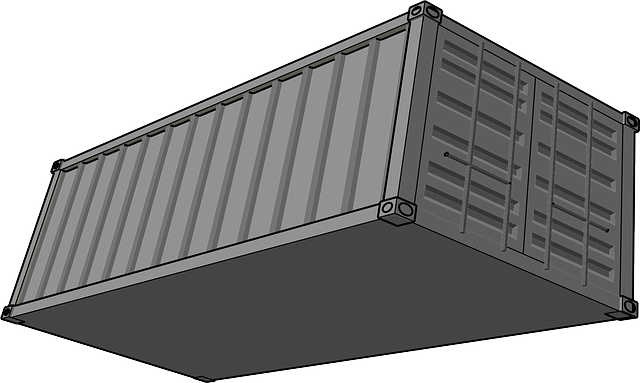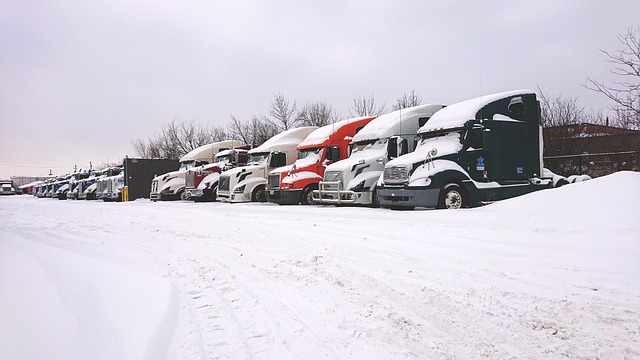For businesses operating vehicles, securing adequate fleet liability coverage is essential to protect against accidents, legal claims, and financial burdens. By identifying risks through risk assessments and developing strategic mitigation policies, companies can minimize incidents. This includes focusing on driver safety, vehicle maintenance, and traffic law compliance. Continuous improvement through data-driven approaches, employee engagement, and regular reviews of safety protocols further reduces liabilities, ensuring business stability and a culture of safety consciousness.
In today’s dynamic operational landscape, businesses with fleets must proactively manage risks to minimize liability incidents. This comprehensive guide explores crucial aspects of fleet management, focusing on fleet liability coverage. We’ll delve into identifying potential hazards and crafting tailored policies for risk mitigation. By understanding and mitigating these risks, organizations can enhance operational efficiency, protect their reputation, and ensure regulatory compliance. Learn how to implement and monitor effective strategies for continuous improvement in fleet liability management.
Understanding Fleet Liability Coverage: A Comprehensive Overview

Understanding fleet liability coverage is paramount for businesses operating a fleet of vehicles, as it provides financial protection against potential incidents and legal claims. This type of insurance plays a crucial role in mitigating risks associated with on-the-road operations, ensuring that companies are not burdened by excessive financial liabilities. Fleet liability coverage typically includes compensation for damages caused to third parties, such as property damage or personal injuries, resulting from accidents involving fleet vehicles.
A comprehensive fleet liability coverage policy should also cover legal expenses and settlements, offering businesses peace of mind in the event of a claim. By carefully reviewing and comparing different insurance plans, business owners can tailor their fleet liability coverage to fit specific operational needs, ensuring they are adequately protected against various risks. This proactive approach not only minimizes financial exposure but also fosters a culture of safety within the organization.
Identifying Risks and Potential Incidents

Identifying risks and potential incidents is a foundational step in creating proactive policies for reducing fleet liability coverage claims. Organizations must conduct thorough risk assessments to understand their unique exposure points, from driver behavior and vehicle maintenance to operational procedures and external factors. By mapping out these risks, they can pinpoint problem areas where accidents or incidents are more likely to occur.
This process involves analyzing historical data on claims, accidents, and near-misses, as well as staying abreast of industry trends and regulatory changes. It also requires engaging employees at all levels—from drivers to maintenance staff—to gather insights into potential hazards they encounter daily. This collaborative approach ensures a comprehensive understanding of the organization’s operational risks, enabling the development of tailored strategies for mitigation and prevention.
Crafting Effective Policies for Risk Mitigation

Crafting effective policies for risk mitigation is a strategic approach that organizations should embrace to minimize potential liabilities. These policies serve as guidelines, ensuring every stakeholder understands their roles and responsibilities in safeguarding against incidents that could lead to financial losses or reputational damage. A well-structured policy framework should encompass comprehensive risk assessment, where all possible hazards are identified and analyzed for their likelihood and impact.
For businesses managing a fleet of vehicles, implementing policies focused on driver safety, vehicle maintenance, and compliance with traffic regulations is paramount. Fleet liability coverage is an essential component, providing financial protection against claims arising from accidents involving company vehicles. By integrating such measures into their risk mitigation strategies, organizations can proactively reduce the likelihood of incidents, ensuring business continuity and minimizing exposure to legal and financial risks.
Implementing and Monitoring: Ensuring Continuous Improvement

Implementing robust policies is just the first step; effective monitoring and continuous improvement are key to ensuring success in reducing liability incidents, especially when it comes to fleet operations. Regularly reviewing and updating safety protocols allows businesses to stay ahead of emerging risks and adapt to changing industry standards. By establishing clear performance metrics and key indicators, organizations can track progress and identify areas that require further attention. This data-driven approach enables proactive measures to be taken, such as enhancing driver training programs, implementing advanced technology for fleet monitoring, or refining risk assessment procedures.
Continuous improvement initiatives should also involve engaging employees at all levels. Encouraging open communication fosters a culture of safety consciousness where everyone takes ownership of their role in preventing liability incidents. Regular staff meetings, feedback sessions, and training workshops can help keep the focus on safety, ensuring that best practices are consistently applied across the entire fleet operation.
In light of the above discussions, it’s clear that proactive policies are key to reducing liability incidents in fleets. By understanding fleet liability coverage, identifying potential risks, crafting effective mitigation strategies, and continuously monitoring progress, businesses can significantly enhance safety and minimize financial exposure. These measures not only protect against legal and financial consequences but also contribute to a safer working environment for employees and the public.
